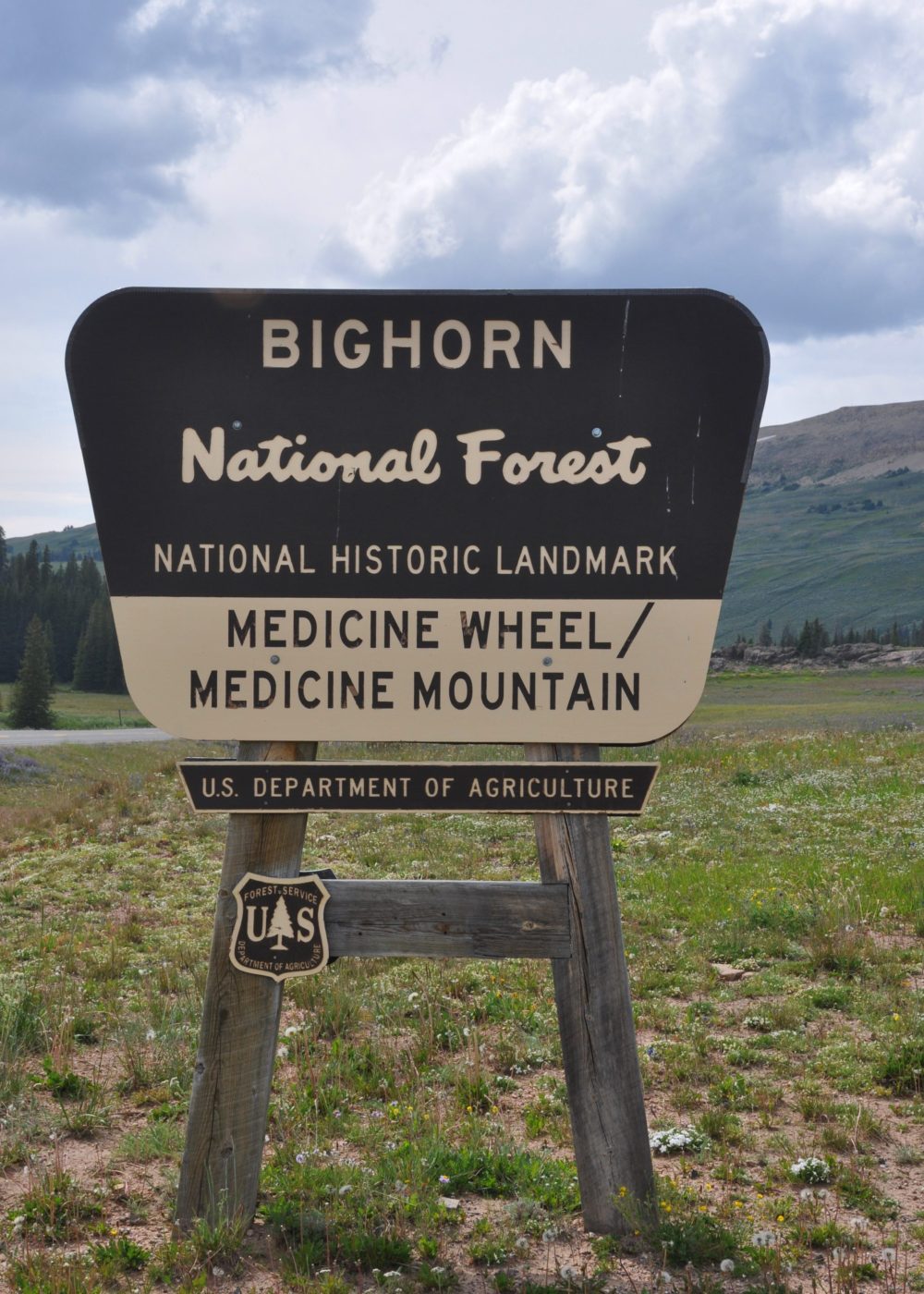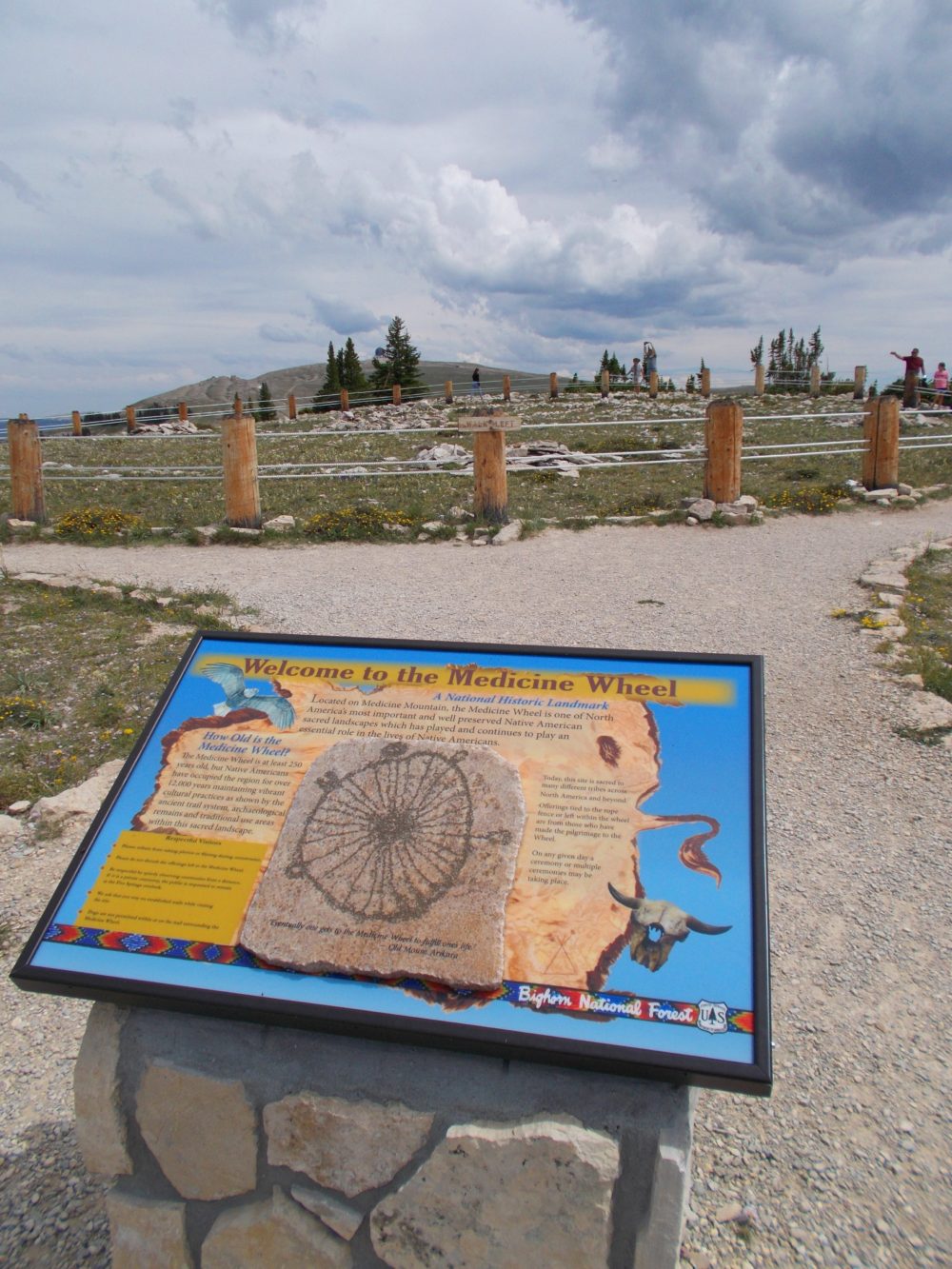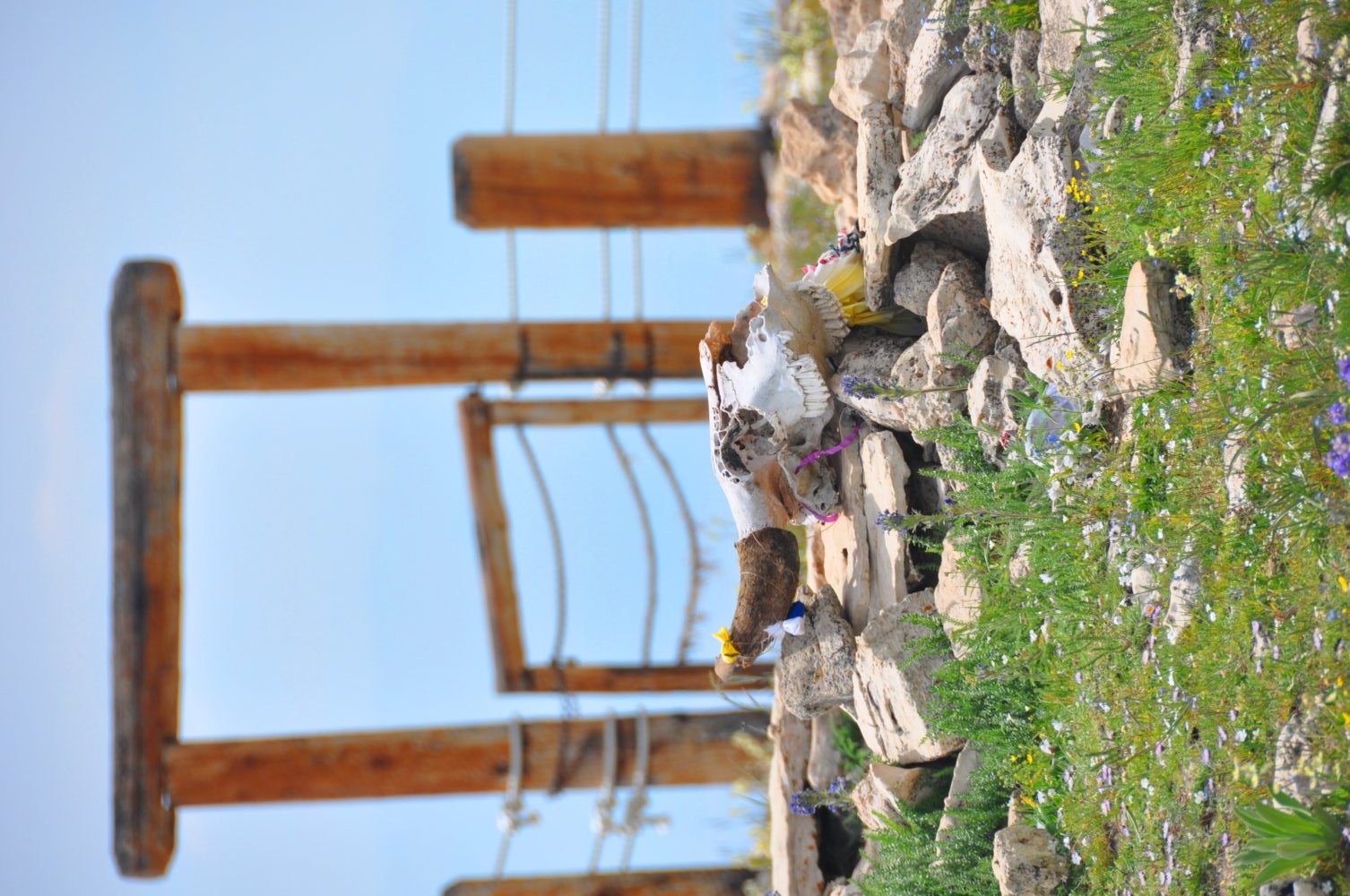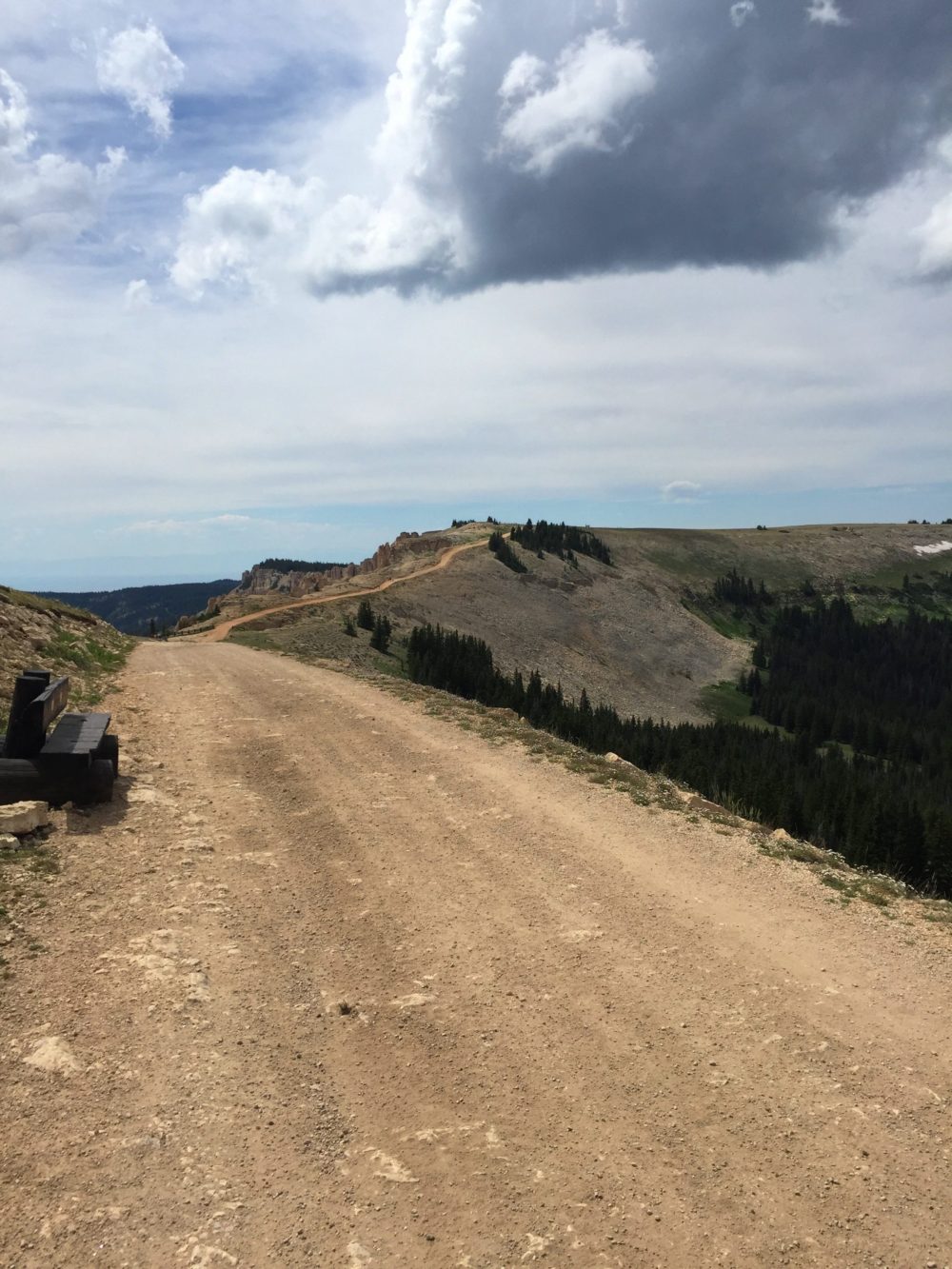In the last installment, we looked at dispersed camping (aka boondocking) in Wyoming’s Bighorn Mountains. Not only is the area very scenic and a respite from the summer heat of the lowlands that surround the range, but it has many areas to keep an adventurous RVer out and about exploring too.
In this post, we will look at what is probably the most visited attraction in the Bighorns. Situated at the elevation of 9,640 feet lies a roughly 80-foot diameter wheel-like design made of stones known as Medicine Wheel.

Medicine Wheel sign. Photos by author (Dave Helgeson)
The wheel, which is considered a National Historic Landmark (NHL), was constructed by the Native Americans somewhere between 300 to 3,000 years ago and has been used for ceremonial purposes and maintained by various Native American tribes since then.
Artifacts and other archaeological evidence collected at the site indicate Native Americans have been visiting the area for nearly 7,000 years. The wheel contains 28 “spokes” constructed of stones with a cairn of stones acting as the hub.

Medicine Wheel
Much like England’s famous Stonehenge, the wheel’s spokes align with the rising and setting of the sun on the summer solstice, celestial bodies (stars) as well as other points on the horizon.
Astrologists have determined the star alignments would have been most accurate around 1200 AD with the solstice alignments being accurate to this day. Even if you are not into historical places, the views alone make it worth a visit.

Ceremonial offering left at the wheel
Visiting Medicine Wheel
Per the Forest Service’s Medicine Wheel webpage:
Visitors are required to walk on the road from the lower parking lot and interpreter’s cabin to the Medicine Wheel, which is roughly 1.5 miles or three miles round trip. Physically-challenged individuals may drive or be driven to the small parking area next to the Medicine Wheel. Restroom facilities are located in the parking lot and at the Wheel.
- The Medicine Wheel is an active Native American sacred site, so please be respectful during your visit.
- On-site interpreters may temporarily close visitation (usually 45 to 60 minutes) for private Native American ceremonies.
- If a ceremony is taking place during your visit, please stay back from the participants and observe quietly.
- Do not take photographs during a ceremony.
- Do not touch the prayer offerings placed on the Medicine Wheel fence by traditional users.
- Stay on established walking paths to protect fragile natural and archaeological resources.
- Dogs must be leashed at all times and are not allowed on the path immediately around the Medicine Wheel. Please plan to clean up after your pet.
- Bring water, sunscreen and clothing appropriate for warm, cold and/or wet weather.

The trail to the wheel
Getting there
From the junction of Highway 14a and Forest Road 12 (N44° 48.399 W107° 52.482) head north approximately 2 miles on Forest Road 12. There is limited parking at the trailhead and the road is somewhat rough so it is best to visit in your tow vehicle or dinghy. If you are just passing through the area, there is a great spot to drop your RV nearby at N44° 48.575 W107° 50.490
Note: Highway 14a coming from the west via Lovell contains an extended 10% grade with a switchback, so if your RV lacks power or good brakes, you may want to skip this section of highway.
The Medicine Wheel is normally accessible from mid to late June through mid-September.
Camping near Medicine Wheel
As mentioned in our last post, dispersed camping opportunities abound in the area. Those wanting a more formal camping area can camp at the Bald Mountain Campground operated by the National Forest Service, which is less than a mile from the road leading to the Medicine Wheel.
Exploring historic places high in the mountains of Wyoming, just another adventure in RVing!

Pulled the 19′ scamp up to lower lot, road is narrow offers little forgiveness.